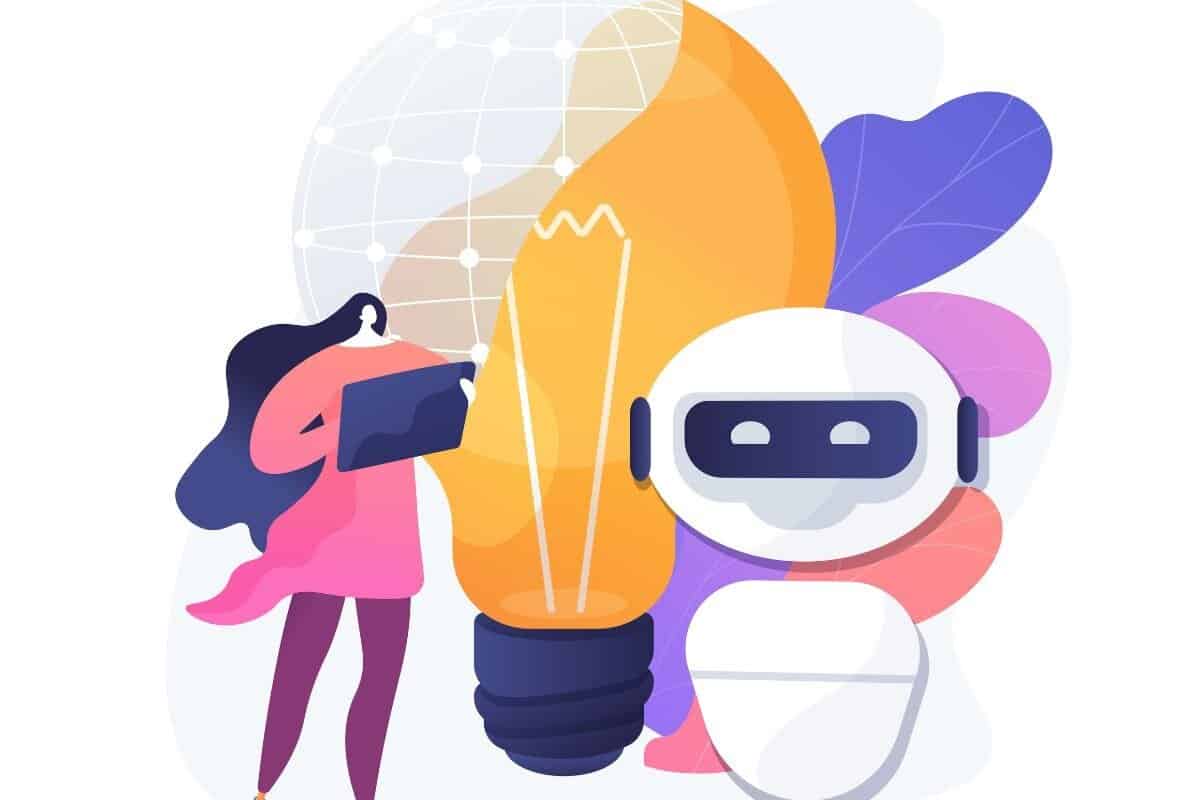ChatGPT has quietly become the digital assistant we never knew we needed.
It’s not a stretch to say that everyone I know has used it at least once, and some people even act like they can’t function without it anymore.
If you’re one of those who, during their chats with ChatGPT, ask it to write your to-do lists or explain quantum physics in plain English, have stopped to wonder, who invented ChatGPT? Which country did it originate from? How did it come into being?, you’re in the right place.
In this article, we talk about the visionaries who invented ChatGPT and the breakthroughs that made it possible.
Let’s dig into the real story behind ChatGPT.
What Is ChatGPT?
ChatGPT is an AI chatbot created by OpenAI, a San Francisco-based research lab. It was officially launched to the public on November 30, 2022, and it became one of the fastest-growing consumer apps in history that reached over 100 million users in just two months.
However, ChatGPT didn’t appear out of thin air. It is built on the GPT (Generative Pre-trained Transformer) model, which OpenAI has been developing since 2018.
At the core of it is a deep learning method called a Transformer, originally introduced by Google in 2017. Transformers are really good at understanding context.
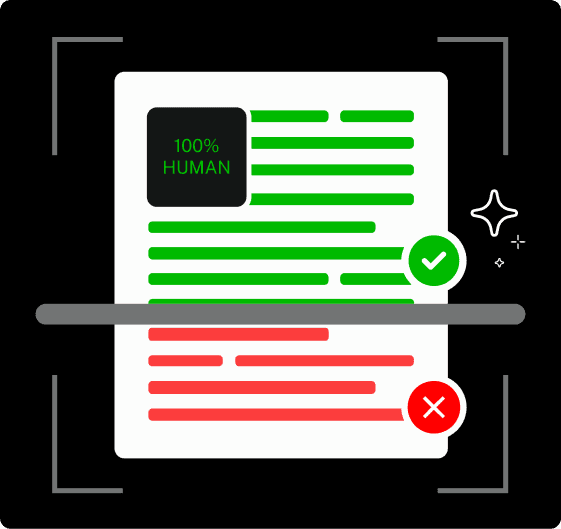
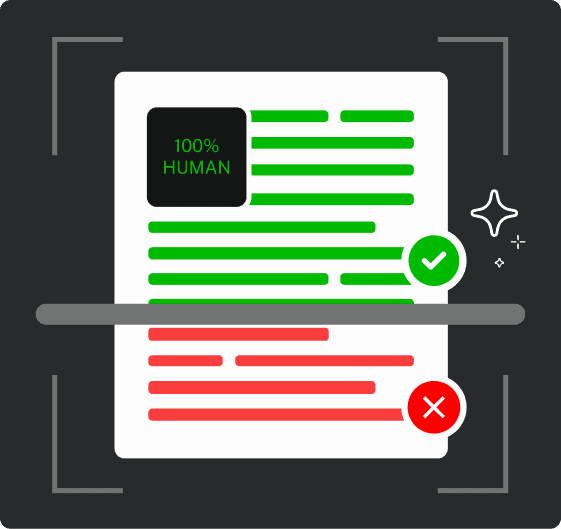
Never Worry About AI Detecting Your Texts Again. Undetectable AI Can Help You:
- Make your AI assisted writing appear human-like.
- Bypass all major AI detection tools with just one click.
- Use AI safely and confidently in school and work.
That is why ChatGPT takes what you type, understands the meaning behind it, and responds in a way that actually sounds quite like a real person.
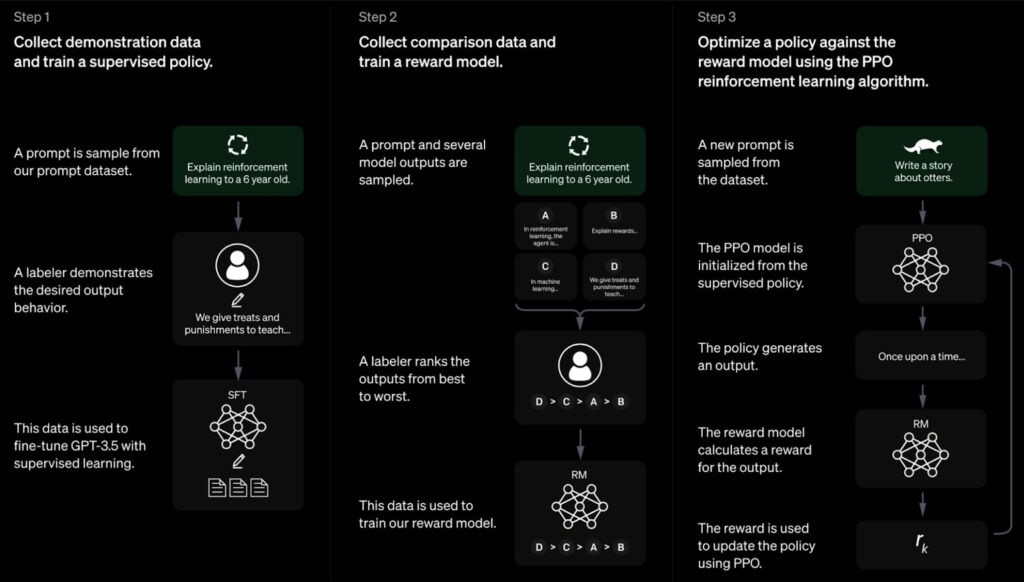
[Source]
The Company Behind ChatGPT: OpenAI
OpenAI is an AI research and deployment company based in San Francisco that was founded in December 2015.
From day one, OpenAI’s north star has been about aligning the development of AI with human values, safety, and transparency.
It started out as a non-profit, but pivoted to a “capped-profit” model in 2019.
According to the model, company investors can make up to 100x returns on their investment, but OpenAI itself doesn’t exist to maximize profit like a standard Silicon Valley startup (or atleast says so).
It is structured as a hybrid organization, officially called OpenAI LP (Limited Partnership), governed by OpenAI Nonprofit.
And yes, this hybrid model has raised some eyebrows, but it has also allowed them to raise billions (literally) to fund research while still claiming to hold ethics and long-term alignment front and center.
Founders of OpenAI
OpenAI came together after tech and AI researchers joined hands with Silicon Valley royalty.
There are 11 founders of OpenAI. The prominent founders of OpenAI include:
- Elon Musk—Co-founder and early investor: Yes, that Elon Musk, the CEO of Tesla, SpaceX, and now owner of X (formerly Twitter). He funded OpenAI at the start (reportedly pledged $1 billion), but he left the board in 2018 over a conflict of interest about OpenAI’s direction.
- Sam Altman—Co-founder, CEO: Before OpenAI, Altman was president of Y Combinator, the Silicon Valley startup accelerator that launched Airbnb, Dropbox, and Stripe. He has been the public face of OpenAI since ChatGPT’s launch. Fun fact, in 2023, Altman was briefly fired by OpenAI’s board due to governance concerns, but he was reinstated after 5 days.
- Greg Brockman—Co-founder, President, and CTO: Formerly Stripe’s CTO, Brockman built OpenAI’s early technical team and infrastructure. He’s the engineer’s engineer, who contributes heavily to making the AI actually run and scale.
- Ilya Sutskever—Co-founder, Chief Scientist: Sutskever is one of the most respected researchers in deep learning. He previously worked at Google Brain and co-authored some of the seminal papers that built today’s AI.
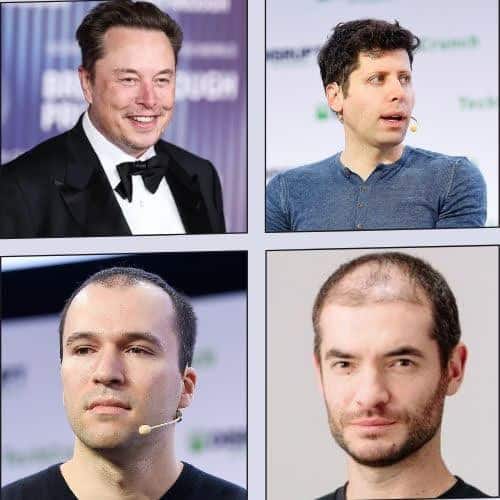
Other founding members of OpenAI are:
- Wojciech Zaremba: A research scientist who continues to lead OpenAI’s language and code generation efforts.
- John Schulman: An important figure in reinforcement learning research, Schulman left OpenAI in August 2024 to join Anthropic, focusing on AI alignment.
- Andrej Karpathy: Initially a research scientist at OpenAI, Karpathy departed in 2017 to join Tesla. He returned to OpenAI in 2023 but left again in 2024 to launch the AI education startup Eureka Labs.
- Durk Kingma: Durk Kingma is known for his contributions to variational autoencoders. Kingma left OpenAI in 2018 to join Google DeepMind and later moved to Anthropic in 2024.
- Trevor Blackwell: Trevor is a roboticist and former Y Combinator partner. He departed OpenAI in 2017. He has since focused on robotics and programming methodologies.
- Vicki Cheung: Vicki was an engineer who led infrastructure at OpenAI. She also left OpenAI in 2017 to join Lyft. She is now the CTO and co-founder of the machine learning firm Gantry.
- Pamela Vagata: Though less publicly known, Vagata was listed as a founding member on early OpenAI materials. She later worked at Facebook and Stripe before becoming a founding partner at the venture capital firm Pebblebed.
When Was ChatGPT Invented?
ChatGPT was officially launched by OpenAI on November 30, 2022.
However, as with most major innovations, the real story started long before that.
OpenAI had been working on GPTs (Generative Pre-trained Transformers) since 2018.
The company took a version of GPT-3.5 and fine-tuned it using Reinforcement Learning from Human Feedback (RLHF).
In simple terms, real humans gave feedback on responses so the AI could learn to be more helpful and less biased.
The release of GPT-3.5, the version people associate with ChatGPT, was the first time non-tech users could have conversations with a language model for free.
And naturally, it caught fire and hit 1 million users within five days.
For context, it took Netflix over three years to reach that mark.
The current version of ChatGPT uses GPT-4 came out on March 14, 2023, and brought major improvements, such as better reasoning, less factual mistakes, and multimedia input capability.
As per ChatGPT’s Wikipedia page (as of April 27th, 2025), ChatGPT’s previous and current models include:
| Model | Release date | Status |
| GPT-3.5 | November 2022 | Discontinued |
| GPT-3.5 Turbo | 2023 | Discontinued |
| GPT-4 | March 2023 | Active |
| GPT-4o | May 2024 | Active |
| GPT-4o mini | July 2024 | Active |
| o1-preview | September 2024 | Discontinued |
| o1-mini | September 2024 | Discontinued |
| o1 | December 2024 | Discontinued |
| o1 pro mode | December 2024 | Discontinued |
| o3-mini | January 2025 | Discontinued |
| o3-mini-high | January 2025 | Discontinued |
| GPT-4.5 | February 2025 | Active |
| o3 | April 2025 | Active |
| o4-mini | April 2025 | Active |
The Team That Developed ChatGPT
We talked in detail about how the underlying model behind ChatGPT is GPT, but this architecture was developed and refined by OpenAI’s Language Team.
The key contributors of the team who invented ChatGPT AI include:
- Alec Radford who led the development of GPT-1 and GPT-2. His name shows up consistently on early GPT papers. He was instrumental in applying the transformer architecture to generative text modeling.
- Jeffrey Wu, a critical contributor to GPT-2 and GPT-3 training strategies, especially around instruction tuning.
- Ilya Sutskever, the co-founder and chief scientist at OpenAI and a former Google Brain researcher. He provided high-level research direction and shaped the company’s vision for scalable deep learning models.
- Jan Leike was the co-leader of OpenAI’s Alignment team, who introduced Reinforcement Learning from Human Feedback.
- Long Ouyang, the lead author on the InstructGPT paper, the direct precursor to ChatGPT.
- Christy Adkins, the head of OpenAI’s data labeling team. She managed the human trainers who gave thousands of examples and comparisons that taught ChatGPT how to respond helpfully.
- Mira Murati was the CTO of OpenAI during ChatGPT’s launch. She oversaw the integration of research and engineering and pushed ChatGPT out the door as a product.
OpenAI’s Mission and Vision
OpenAI’s mission is to ensure artificial general intelligence (AGI) benefits all of humanity.
The company designs AI that aligns with human values, is safe to deploy, and distributes its power responsibly.
OpenAI sets the standard for how AI should serve people with the core values of ethical development, transparency, collaboration, and continuous learning.
And unlike many tech companies, they’ve baked those principles into their structure from capped-profit models to external governance layers.
At Undetectable AI, we deeply align with that mission from a more grounded, content-focused perspective.
While OpenAI scales intelligence, we scale authenticity. We believe AI shouldn’t sound like AI, it should sound like you.
It should empower you to communicate more clearly and confidently, without stripping away your authenticity.
Our tools, such as the AI Humanizer, AI SEO Content and Essay Writer, Smart Applier, Cover Letter and Resume Generator, etc, help people create content that feels human, resonates emotionally, and remains ethically sound while serving people better.
Discover our AI Detector and Humanizer right in the widget below!
Key Milestones in ChatGPT’s Development
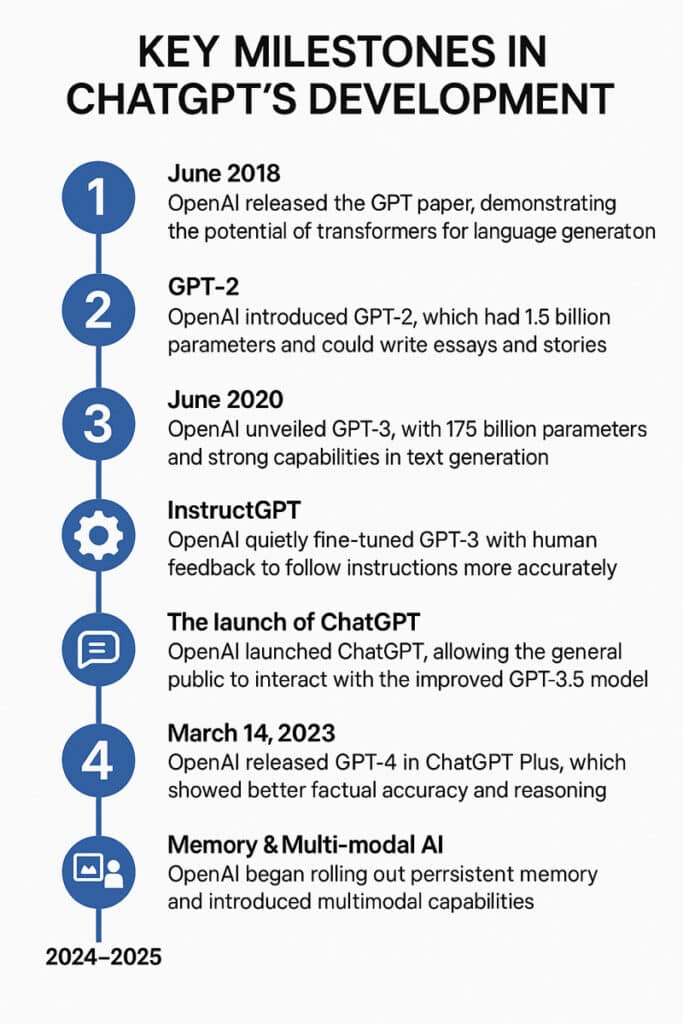
We all know ChatGPT as the AI that can draft emails, write code, help with homework, and sometimes freak people out with how “human” it sounds.
The story of how it got here is an entire rollercoaster with multiple turning points.
- June 2018 – GPT-1: The proof-of-concept phase, where OpenAI released the GPT paper. It had 117 million parameters trained on BooksCorpus, and was the first time transformers showed serious potential for open-ended language generation.
- February 2019 – GPT-2: GPT-2 had 1.5 billion parameters, it could write whole essays/stories and answer questions convincingly. This time, OpenAI made headlines by not releasing the full model immediately.
- June 2020 – GPT-3: With 175 billion parameters, GPT-3 could mimic styles, write decent code, translate languages, and do some basic reasoning but it was available only via API to developers.
- Early 2022 – InstructGPT: OpenAI quietly worked on improving GPT-3 using human feedback to make it follow instructions better. The shift from completing text to responding helpfully laid the foundation for ChatGPT.
- November 30, 2022 – The launch of ChatGPT: OpenAI wrapped an improved GPT-3.5 model into a chat interface and gave it to the public for free. Teachers, marketers, programmers, students, and CEOs all jumped on using it so fast that Google issued a code-red.
- March 14, 2023 – GPT-4 Debut: OpenAI released GPT-4 available in ChatGPT for ChatGPT Plus users. It had much better factual accuracy and reasoning that it passed bar and SAT exams.
- 2024–2025 – Memory & Multi-modal AI: OpenAI began rolling out persistent memory so that ChatGPT could remember facts about you across chats. It also introduced multimodal abilities (understanding and generating both text and images).
FAQs About ChatGPT’s Invention
Did Elon Musk invent ChatGPT?
No, Elon Musk did not invent ChatGPT. He was an early investor and one of the founding members of OpenAI, the company behind ChatGPT.
ChatGPT was developed by OpenAI, a company he co-founded but later left. The people who invented ChatGPT were part of OpenAI’s language and alignment teams.
Who is the CEO of OpenAI?
The CEO of OpenAI is Sam Altman. He has led the organization since 2019.
Is ChatGPT open source?
No, ChatGPT is not open source.
It has shared some models and research publicly, but the full versions of ChatGPT, especially GPT-4, remain proprietary, meaning the code is not available to the public.
Where is OpenAI based?
OpenAI is based in San Francisco, California.
It operates as a research organization focused on developing artificial general intelligence (AGI) that benefits humanity with a global impact beyond its headquarters.
Final Thoughts
In short, ChatGPT wasn’t invented by a single genius. It was the result of years of research, experimentation, successes and failures, and a deep commitment to building AI responsibly.
The chatbot was born out of OpenAI’s mission to align artificial intelligence with human values, and it reflects a collaborative effort from some of the brightest minds in machine learning and ethics.
But as powerful as ChatGPT is, it raises the concern as to how do we ensure AI-written content still sounds human and is understood as human?
Undetectable AI is the solution purpose-built to help people stay in control of their voice in an AI-driven world.
You can use it to:
- Humanize AI-content
- Check your writing for AI detection
- Optimize your SEO using AI without compromising on authenticity
- Augment learning and job application process while staying true to your voice
Try Undetectable AI today.
